Just off a Dutch motorway on a quiet, residential street outside of Maastricht, Holland, Reed Kessler has found her home. When Kessler moved to Germany in 2013 to train with Marcus Ehning, her fans and many followers made the assumption that eventually, she would return stateside to continue her career. Not so, Kessler says, as she takes in the 26-acre training facility in The Netherlands that she and her family purchased less than two months ago. She’s officially set down roots in Europe, a transition that coincides with running her own operation for the first time, and turning 21-years-old this July.
During the off week of the Spruce Meadows summer series, Kessler flew to Holland to spend a few days at her new home base, and took the time to show us around the beautiful property. Originally built by Henk Nooren, the facility is also the home base of German rider Katharina Offel, who rents one side of the U shaped barn. As Kessler pointed out the property’s sweeping grass riding field, glassed-in barn aisles and airy indoor arena, she discussed what it means to be responsible for her own program, why it’s important to have no one else to blame, and how she’s learned that not being afraid to go out there and fail leads to bigger, and better success down the road:
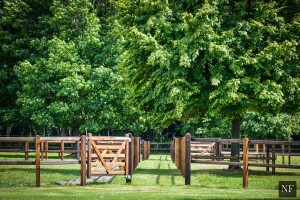 Q: What facilitated the move to your own barn?
Q: What facilitated the move to your own barn?
A: I knew that I was ready. My parents and I discussed for a couple years, when would be the most appropriate time to start out on my own. I’m almost 21, and it felt like a good time to start handling my program on my own [without a trainer]. My parents have always raised me to be my own woman, and to eventually run my career independently.
We were planning to rent a barn in Europe, and then just a lot of things clicked, the Euro dropped, this barn was for sale, and it was sort of meant to be that we ended up buying it. From the moment I saw this place I was in love with it and wanted to live here.
Q: You’ve said before that you’ve always done things at a younger age than most. Now here is another step you’re taking at a relatively young age. What made you feel ready?
A: In the US, it would be really young sure, in Europe though, it’s not so uncommon.
Q: Explain to riders in America who have never seen the European circuit why you chose to base yourself in Holland, rather than back home in the USA?
A: This area is the most central place you can live, in terms of the show jumping circuit. I’m right on the border of Germany and Belgium so it’s very easy to go to a lot of different shows. The travel is easier on the horses, and my quality of life is a lot higher because I can stay three or four days a week at home, and sometimes even sleep at home and still go to the shows. In the United States, to get to the big shows, you are more living out of hotel rooms and the horses are always on the road.
And the quality of competition, that’s the most important part. I really enjoy showing over here, at the best shows in the world, with the best riders in the world. Besides Spruce Meadows we don’t have a lot of that in North America. Here there are so many shows every week that if you don’t get into one show, there’s another one to go to, and if you don’t like one show, you can go to a different one. There’s just a lot of choice.
Q: It sounds like even though your family has a farm in Kentucky, it was a foregone conclusion that eventually you’d base yourself in Europe.
A: It was. I told my parents when I first starting coming here to ride when I was 13, that one day I’d be based in Europe and that I wanted to have my own place here. Kentucky is more my parents’ place – I just go there a little bit each year during the World Cup fall circuit or for a short time here and there.
Q: What do you love about your new barn in Holland?
A:I love the barn aisles –when Henk Nooren built the facility they were open, and then over time someone put in the windows. They’re nice because in the winter you can close everything, it stays nice and warm but there’s still plenty of natural light, so the horses can put their heads out of the doors and still feel like they’re putting their head outside. And in the summer all of the windows can be open.
The horses are very happy and fresh here. The layout is really horse friendly, it’s very natural for the horses. There’s not just turnout, there are big, big fields. There’s a racetrack through the woods that goes all the way around the paddocks, there’s a big grass field with natural fences, and you can ride in and out of the sand ring. So for the horses it’s not everyday in the ring, it’s not boring.
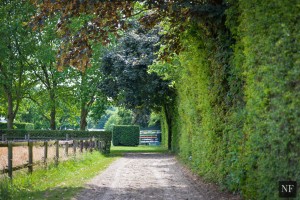 I’ve been to some really remote places in Europe. And I think this is really a place where people would be happy. To come here for a tour in the summer is lovely. The area is lovely. This can become a place where other Americans can come to layover and train, and maybe one day it can be a place for the U.S. teams to spend time when they’re in Europe.
I’ve been to some really remote places in Europe. And I think this is really a place where people would be happy. To come here for a tour in the summer is lovely. The area is lovely. This can become a place where other Americans can come to layover and train, and maybe one day it can be a place for the U.S. teams to spend time when they’re in Europe.
Q: How did training with Marcus Ehning help you get to where you are now?
A: Marcus’ barn was a very different program than what I’d experienced in the States. Marcus is primarily a rider. He was not spending every single moment of his life getting me ready for the ring. His program was already more independent and I began having more of a hand in the business and planning of things, especially in planning the American trips. I’ll make plenty of mistakes as I go, but I think that’s the only way you can learn.
Q: And what did you carry forward from Katie Prudent, who helped jumpstart your international career?
A: Katie likes her students to ride a variety of horses, to struggle a little bit. I always had nice horses, but if she gave me one and I said, ‘well this one’s a little too strong for me,’ she’d say ‘well, you’re going to learn how to ride it.’ That’s what she expects from her students, that you struggle, you train, you work, you make it better, you learn. That’s why Katie has produced such great riders over time: she really pushes her students to the brink of their capacity. She teaches you to fight for it, to work for it, to win. She knows what her students are capable of before they do.
Q: Does it feel like a big step, to be managing your string of horses yourself?
A: No, it’s not a huge step for me, because even when I trained in Katie’s program, where they are all incredible trainers and very involved, I always managed my own stable. I never boarded my horses with anyone else, my mom and I always took care of them ourselves and they were always under our care, so it’s not like I’m managing my horses for the first time now.
But as far as doing my schedule on my own? Yes, that’s different, and I’m kind of starting to roll with the punches when things go wrong, or things go right.
Q: Is that your biggest challenge, making the decisions for your schedule on your own?
A: Yes, the biggest challenge, which I’m excited about, is that I pick my own horses, and I make my own schedule. Even though Katie’s program was always a very involved program, I always managed my own stable, my own horses, my own staff. It’s a lot of responsibility, and if things go great, fantastic, I can say ‘I’m a genius, I planned the whole thing myself.’ And if things go terribly, I can’t be like ‘well, he made me do it, or she said I had to bring this horse.’ It’s my own fault and no one else’s.
Q: But, it’s not as if you’re making your own schedule for a national show. You’re planning for for the biggest shows in the world. Does the pressure of managing that level of career get to you at all?
A: It is a lot. I’m fortunate that I’ve had Katie and Marcus by my side at all those big shows, so it’s not my first year on the block now. Don’t get me wrong, I’m really young and all that, but it’s not like I’m walking up to Aachen, or to a championships, for the first time. I do have that experience to back me up.
 Q: What are your immediate competition goals?
Q: What are your immediate competition goals?
A: My main priority is always my own career, in riding, I hope to be on many more championship teams and win medals. As for my immediate goals; I want to get myself as high on the ranking list as I can, to try and get myself on the short list for the Olympic Games [the short list will be formed from the average of the ranking list.]
Also, I want to have a couple of students and build up little bit of a sales business, make my own program, take on all that responsibility, and try not to make a mess of it. I’d like to have a really nice string of second horses to buy and sell. The horses that I ride always really suit young riders and amateurs; I’m not someone who’s incredibly strong or anything like that, and if I have success with my horses in the second classes, then I think that amateurs and young riders will too. So you might see my string change a little more often now over time.
Q: What are some lessons you’ve learned, that you might not have learned if you were living full-time in the USA?
A: Living and training on my own in Europe, I’m more attentive to what I’m doing, and conscious of what I’m doing. I think when you’re used to someone constantly telling you things, you’re just trying to do exactly what they’re saying, and you’re not able to process what you’re doing and how it feels.
In the United States we’re a little bit dependent, and I don’t mean that badly because it works for so many people, to always have a ground person. But when you come over here [and go to the ring with a crowd of people] it’s a little bit like, ‘what’s with the entourage? How many people do you need to tell you that it’s six strides from one to two? It’s great to have someone there in important moments, if you have a problem, or to get an outside opinion, but I think that the most important part of all of this has been that I’ve realized how much I can learn on my own.
Q: As an American who has been able to gain a European perspective, what do you think Americans could change, or do better?
A: We are so obsessed with blue ribbons. We love our blue ribbons. It’s fantastic to compete and it’s obvious that we try to win, but I think there are so many talented junior and young riders in the States, who don’t push themselves out of fear of failing or fear of looking silly. American riders love to look perfect, and when it goes well we do look perfect, because we have such a strong base of equitation. But I think that idea of always looking perfect can really hold us back from just getting the job done.
There’ve been plenty of rounds where I’ve looked like an idiot; I’ve had one rein, I’ve had no stirrups, I’ve fought my way around, but that’s how you learn. If I’d stayed in the place where I was comfortable, I would have been doing very well, but I never would have made it so far so quickly, or at all. I think that’s a huge thing for us in the States, to try to not be afraid to struggle.
That’s the biggest message I can try to pass on – that yes, it’s fantastic to win. We all want to win. But when you get consistent at something and you’re doing it well and it’s easy for you, it’s time to do something harder.
Source: Noelle Floyd

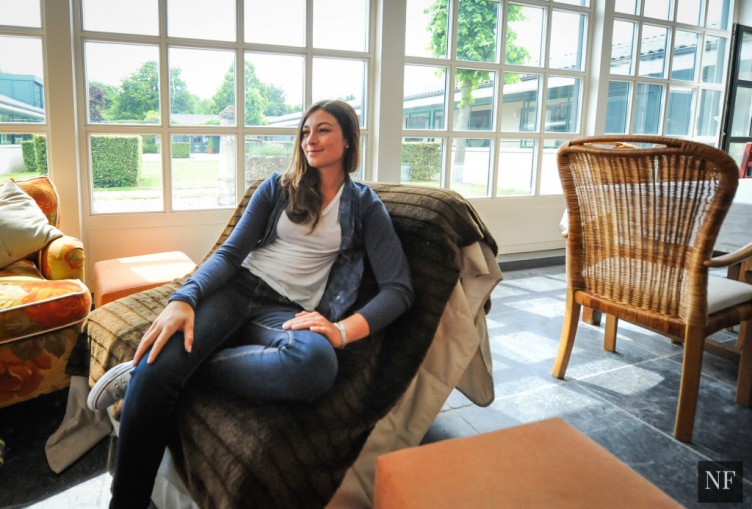
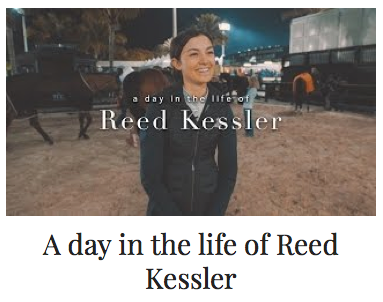
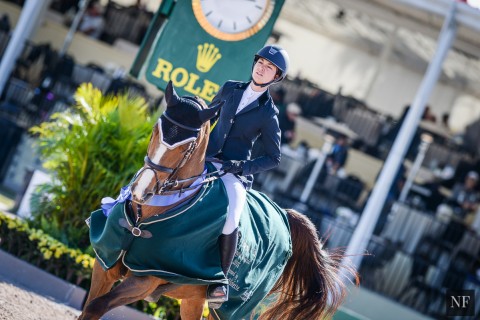
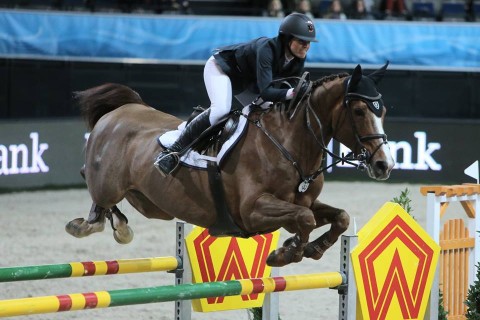


Discussion
Leave a reply